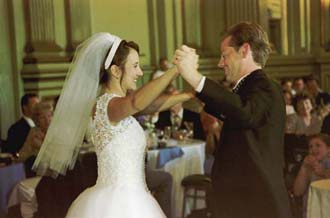Twilight Portraits
Twilight is a magic time for photographers. The setting sun bathes the landscape in a warm glow, providing a beautiful backdrop for portraits. This is an ideal time to shoot any type of shot.
First, you’ll need a tripod or some other means to steady the camera. There’s far less light during this time of day, and therefore the shutter slows down considerably.

Figure 3-16. Tired of having your flash subjects lost in a black hole of darkness? Try using what photographers call slow-synchro flash. Set your camera’s shutter speed and aperture manually to control the exposure of the background. The camera’s flash ensures that the subjects are exposed properly.
Now inspect your camera’s flash options. Look for an option called either Slow-synchro or Nighttime—a setting that synchronizes your flash with the very slow shutter. Look for a “stars and mountain” or “stars and person” icon.
Now position your model in front of the most beautiful part of the landscape and take the picture.
When you push the button, the camera opens the shutter long enough to compensate for the dim twilight lighting, capturing all of the rich, saturated colors. The flash, meanwhile, throttles down, emitting just enough light to illuminate the subject from the front.
The result can be an incredibly striking image that will make your travel pictures the talk of the office. It’s a great technique when shooting ...
Get iPhoto 5: The Missing Manual, Fourth Edition now with the O’Reilly learning platform.
O’Reilly members experience books, live events, courses curated by job role, and more from O’Reilly and nearly 200 top publishers.

